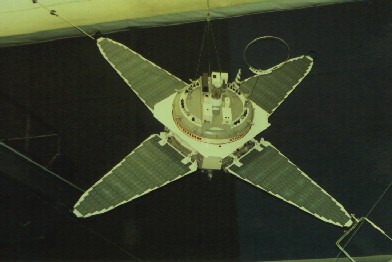Prognoz Series

The Prognoz 9 satellite. (Credit: Soviet Space Program)
The Prognoz program was a series of Soviet scientific research satellites which were primarily intended for study of particles, fields and solar radiation.
Lifetime: April 1972 (first launch, Prognoz 1) - January 1994 (orbit of last satellite, Prognoz 10 decays)
Country (primary): Soviet Union
Primary Science
The Prognoz satellites were primarily intended to study particles, fields, and solar electromagnetic radiation. However, additional studies were undertaken by the satellites, including studies of the Earth's magnetosphere and ultraviolet, X-ray and gamma-ray astronomical observations.
High Energy Science
Several of the Prognoz satellites carried instruments that were sensitive to high energy photons. In particular, Prognoz 2, 6, 7 and 9 all contributed to the study of gamma-ray bursts. Prognoz 9 also carried an gamma-ray detector for the study of cosmic gamma-rays.
Instruments
Each satellite carried a slightly different payload with some combination of ultraviolet, X-ray and gamma-ray spectral capabilities. Use the links from each spacecraft listed below to read about the specific instruments in more detail.
Prognoz 2
Lifetime: June 1972 - December 1982
Science Highlights
- Detected cosmic gamma-ray bursts in addition solar events.
Links to more information
Prognoz 6
Lifetime: September 1977 - March 1978
Science Highlights
- Detected 3 confirmed cosmic gamma-ray bursts in addition solar events.
Links to more information
Prognoz 7
Lifetime: October 1978 - June 1979
Science Highlights
- Formed one part of an interplanetary network of gamma-ray bursts to triagnulate the positions of detected bursts.
- Dected 30 confirmed gamma-ray bursts.
Links to more information
Prognoz 9
Lifetime: July 1983 - February 1984 (end of data)
Science Highlights
- Detected soft reporting sources.
- Discovered an extemely intense gamma-ray bursts.


